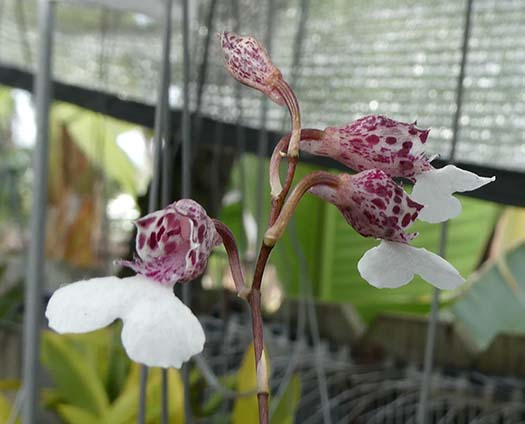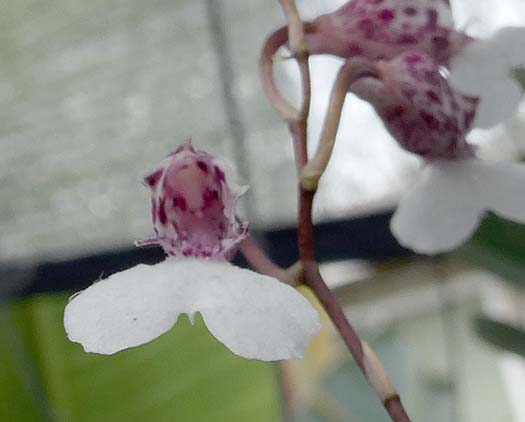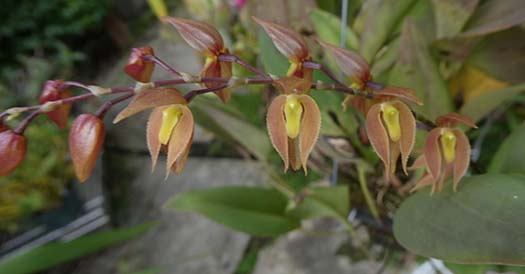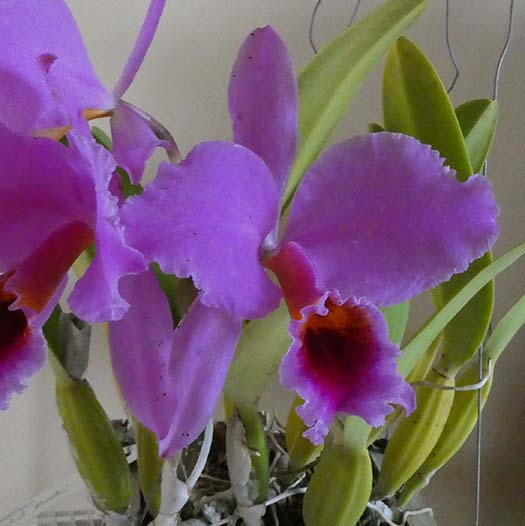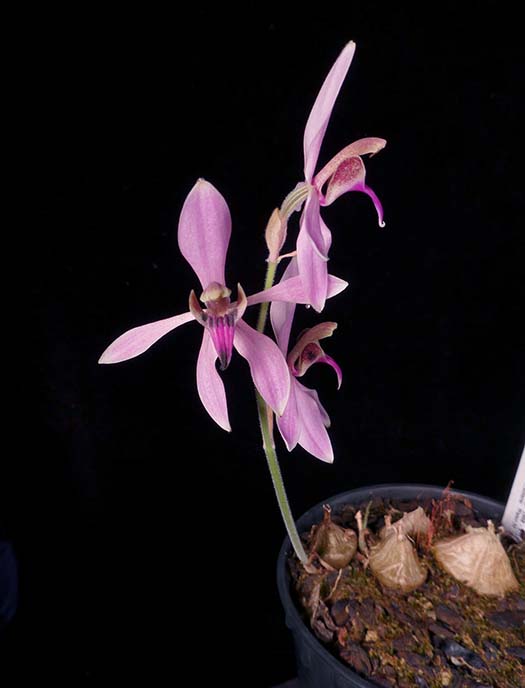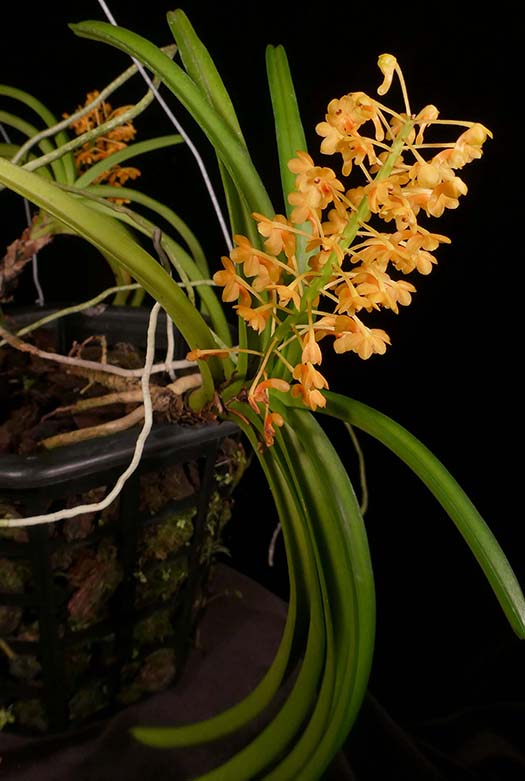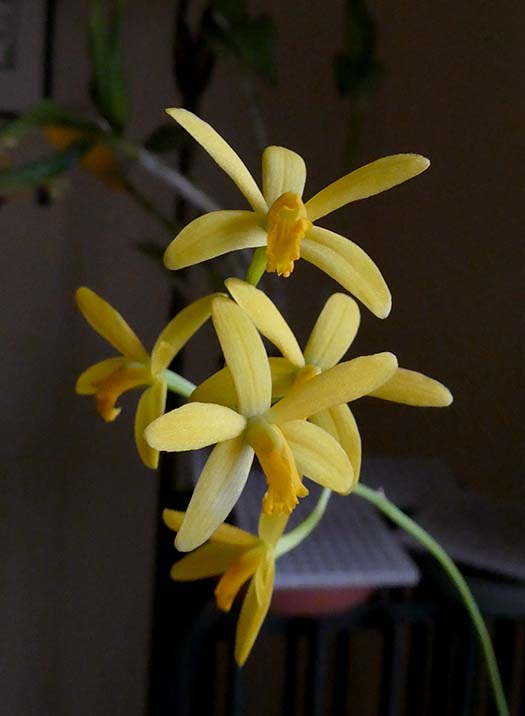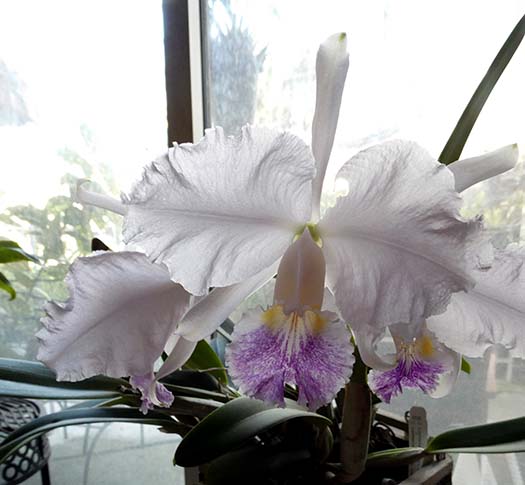February 2023
From Chris Ehrler:
|
|
Coastal, California Central Coast |
|
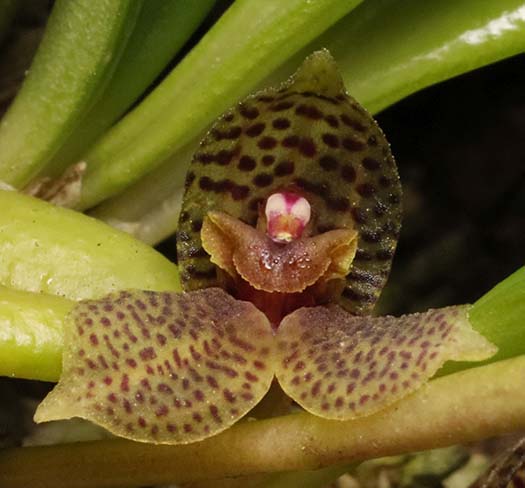
Dryadella simulaNative to Colombia, Ecuador and Peru in the lower cloud forests with a pronounced dry season in the summer and fall at 2000 to 3100 meters in elevation. Grown in a cool greenhouse in a clay pot filled with sphagnum moss. |
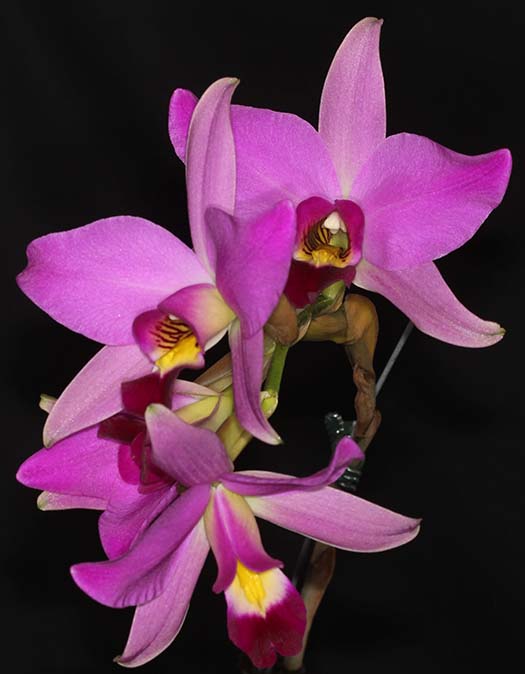
Laelia ancepsThis species grows natively in Mexico and Honduras as a warm to cool growing epiphyte at elevations of 500 to 1500 meters. Is considered a hardy drought-tolerant species that likes a dry winter rest. This orchid is growing outside mounted to a piece of cork oak with some sphagnum moss at the root. |
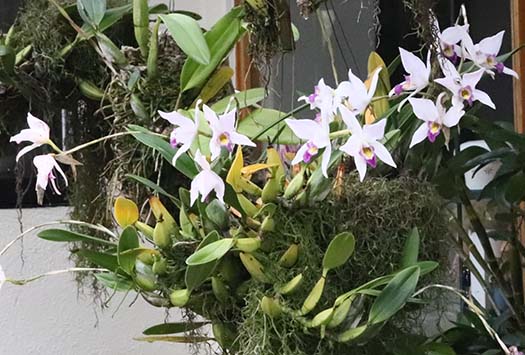 Laelia anceps f. coerulea 'Fort Caroline' |
 |
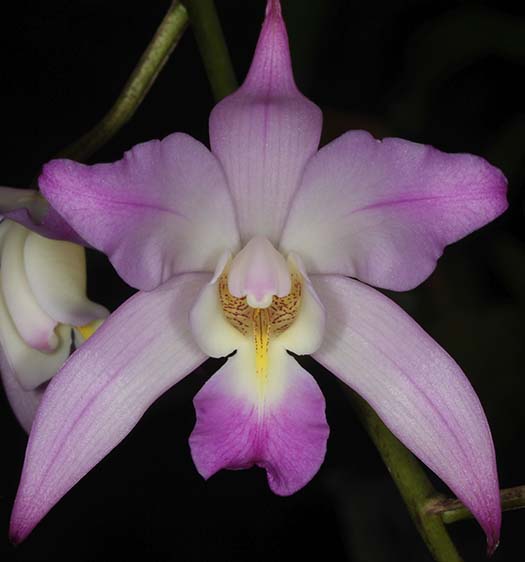 Laelia speciosaA cool to cold growing species found in Mexico at elevations of 1400 to 2400 meters. The orchid is growing in a cool greenhouse and is mounted to a piece of wood with some sphagnum moss on the root. The spike is approximately 2.5 feet long. This orchid was from the Bruce Norman (an FCOS charter member) Collection. Flower looks different than the one on orchidspecies.com so might be mislabeled. |
|
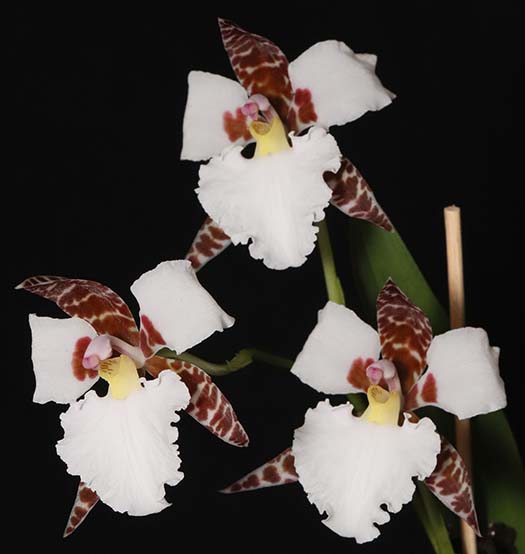
Rhyncostele (Lemboglossum) rossiiFound in Nicaraguan, Honduran, Salvadorean, Guatemalan and Mexican highlands growing as a cold to cool growing epiphytic at elevations of 2000-3000 meters. Growing in a cool greenhouse in a clay pot filled with sphagnum moss. |
|
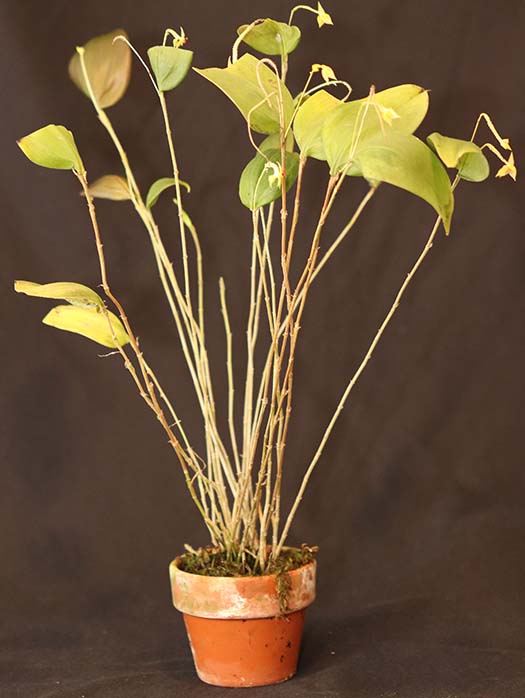 |
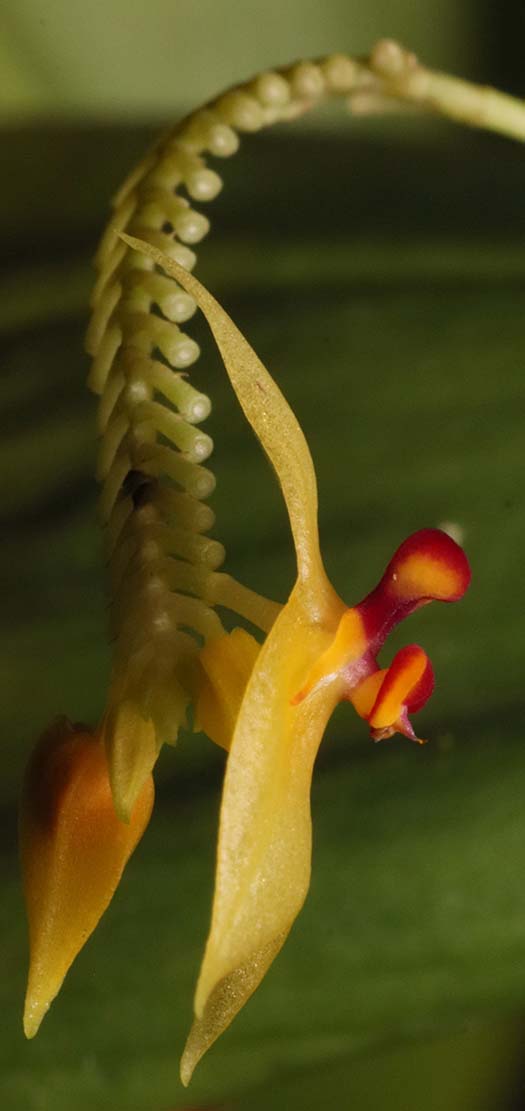
Lepanthes ligaeA cool to cold growing epiphyte found in western Colombia at elevations of 1500 to 2600 meters. The growth of this species is LARGE in relation to most of the rest in this genus. Growing in a cool greenhouse in a clay pot filled with sphagnum moss. |
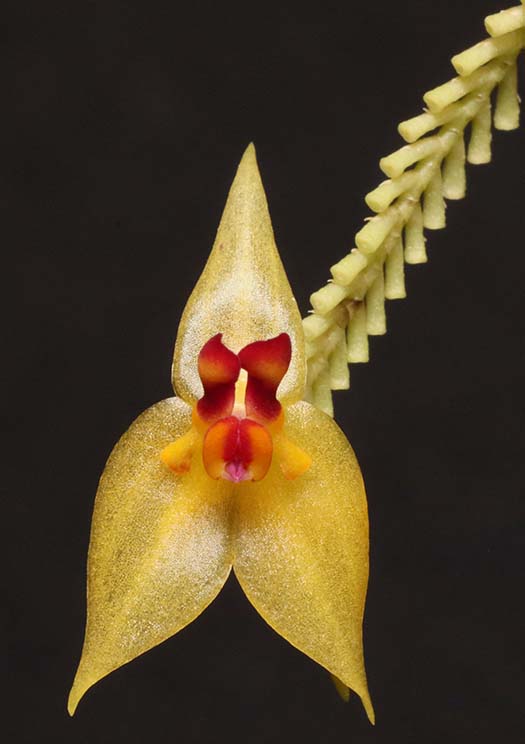 |
|
 |
|
Masdevallia bennettiiThe literature states this is a warm growing epiphtye found in central Peru at elevations around 780 meters. But this plant is growing well in a cool greenhouse where winter night temperatures can be as low at 40F. Growing in a clay pot filled with sphagnum moss. |
|

Masdevallia polystictaA cool to cold growing orchid found at elevations of 1600 to 3000 meters in Ecuador and Peru. Growing in a cool greenhouse mounted on a piece of cork oak with some sphagnum moss on the roots. |
 |
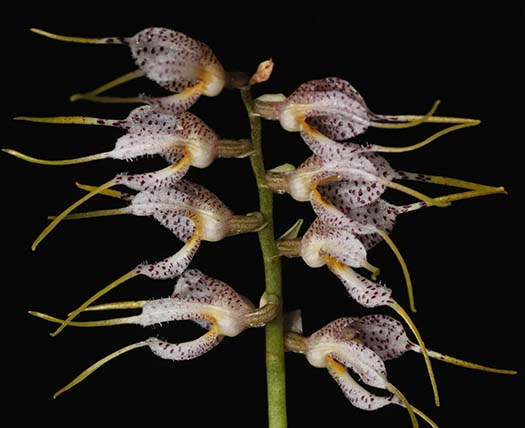 |
|
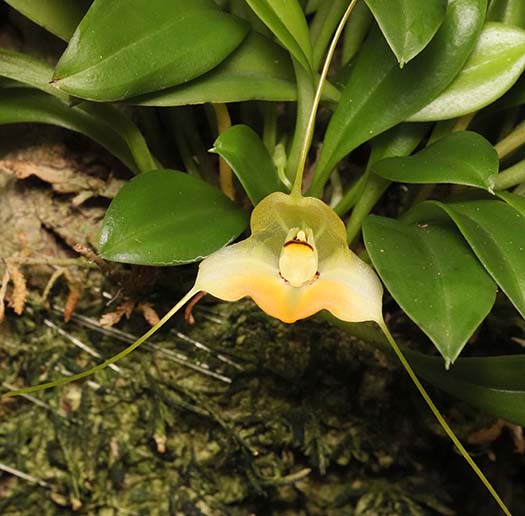 Masdevallia santae-insesaeA cool to cold growing epiphyte found in southern Ecuador in cloud forests at an elevation of 1900 to 2500 meters. Growing in a cool greenhouse mounted on a piece of cork oak with some sphagnum moss on the roots. |
|
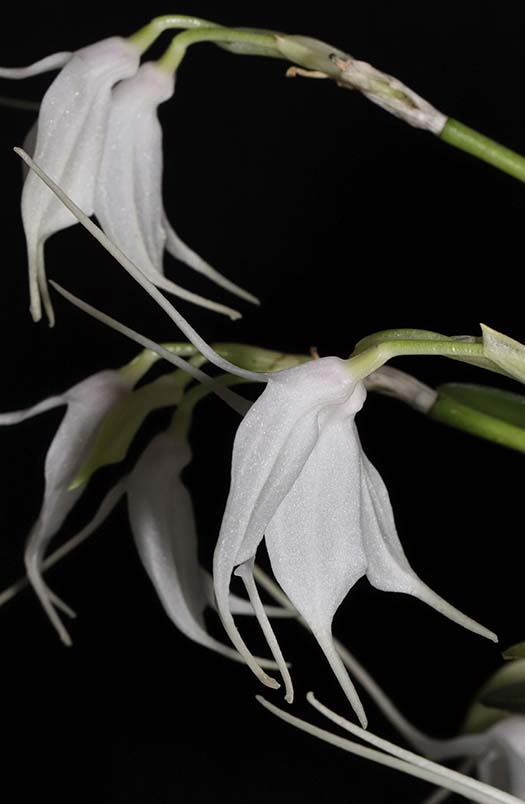
Masdevallia tovarensisEndemic to Venezuela at elevations of 1600 to 2400 meters as a cool to cold growing epiphyte. This orchid grows well either potted in sphagnum moss or mounted with moss on the roots. |
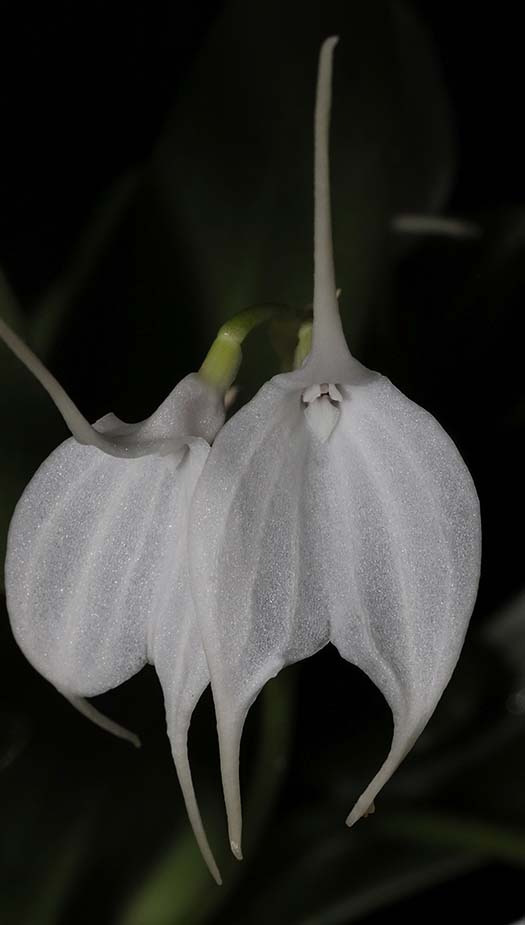 |
 Pleurothallis marthaeA LARGE leafed epiphytic species growing in cold conditions in Colombia. Growing in a clay pot filled with bark and lava rock which is placed in a cool greenhouse. |
 |
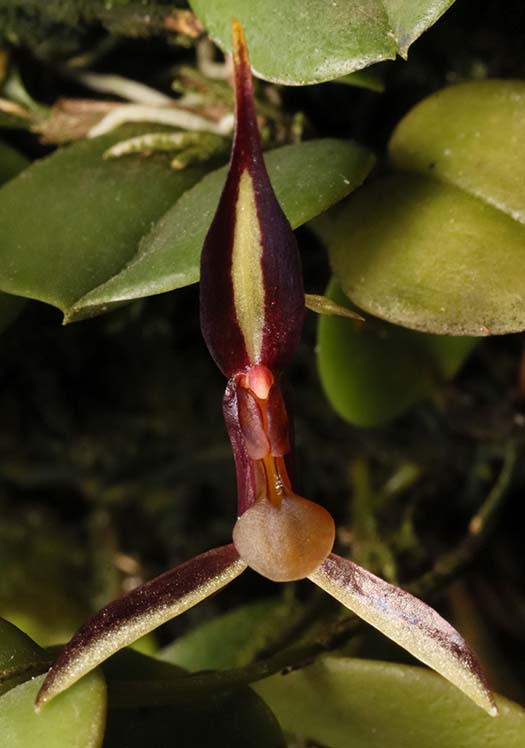 Pleurothallis mystaxFound in Panama in cloud forests at elevations of 650 to 1000 meters. Literature states this is a warm growing epiphyte, but this plant is growing well in a cool greenhouse where winter night temperatures can be as low at 40F. Growing in a clay pot filled with sphagnum moss. |
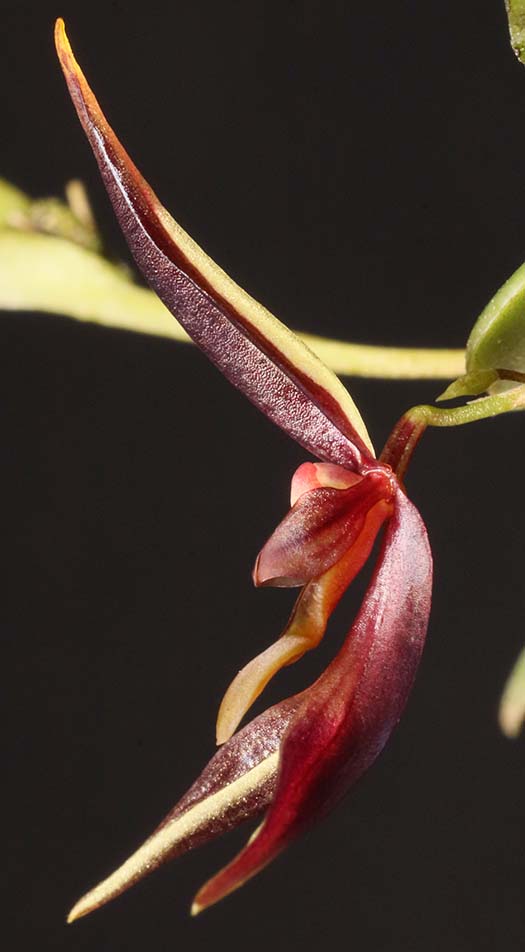 |
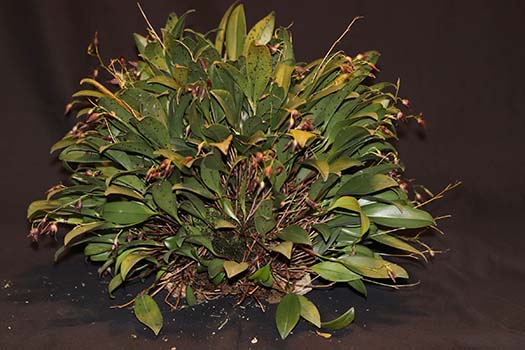 |
|
Pleurothallis pachyglossaGrows as a cool to warm epiphyte in Mexico, Guatemala, Honduras and Costa Rica at elevations of 500 to 1700 meters. This plant was purchased many years ago off the $7.50 table at Santa Barbara Orchid Estate. Grown outside under wood lath on the north side of the house. Growing mounted to a piece of cork oak with sphagnum moss on the roots. |
|
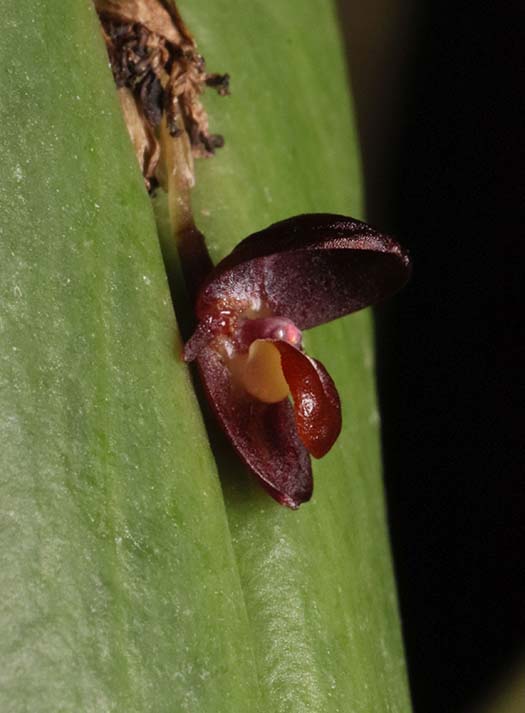 Pleurothallis spp. EcuadorUnknown species of Pleurothallis. Growing mounted to a piece of wood with sphagnum moss on the roots with it placed in a cool greenhouse. Blooms better under low light conditions. |
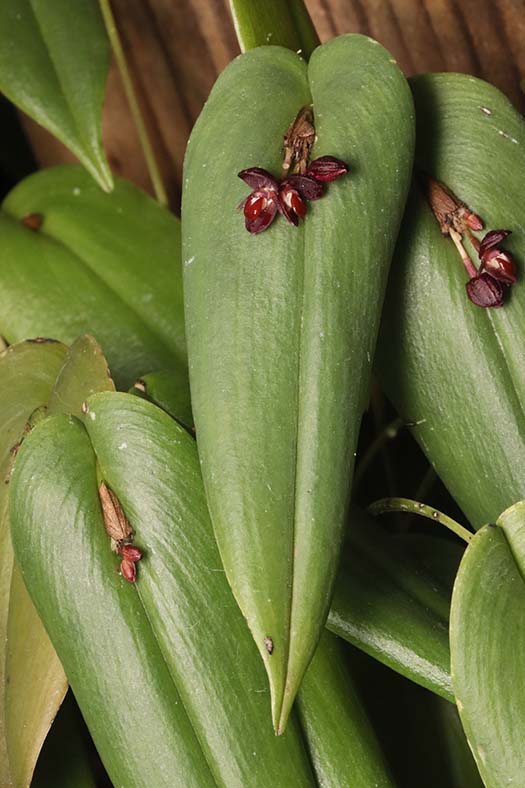 |
From Scott McGregor:All orchids grown outdoors, coastal southern California |
|
Isabelia pulchellaLarge, 18” diameter, 30” long specimen plant hanging only on an old 2” (yes, two inch) clay pot. Likes bright light, cool nights and frequent water. |
|
Isochilus sp. 'OZ'Sold as Isochilus species “oz” but various experts suggest among major, linearis and carnisiflorus. In any case, it is a vigorous outdoor grower with self-pollinating flowers. |
|
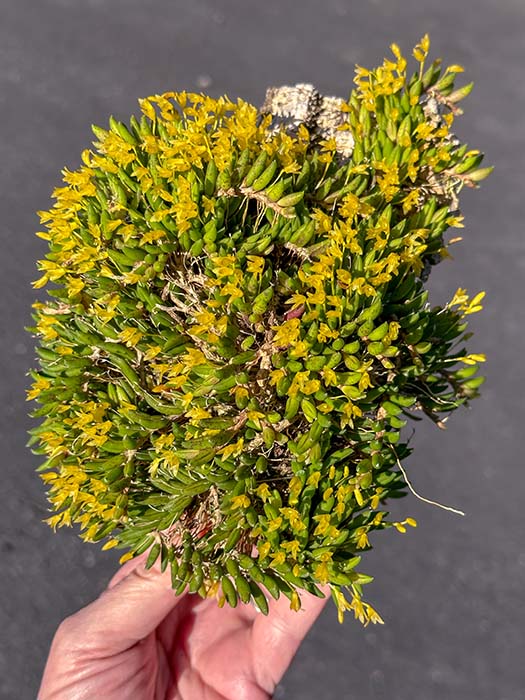
Pleurothallis leptotifoliaAn odd Pleurothallis (as are many of them!) named for its Leptotes-like leaves and similar growth habit. Not large or very pretty flowers, but lots of them in a large plant covering its mount. |
Ceratochilis biglandulosusBlooms half a dozen times per year with a relatively large, crystalline white flower. |
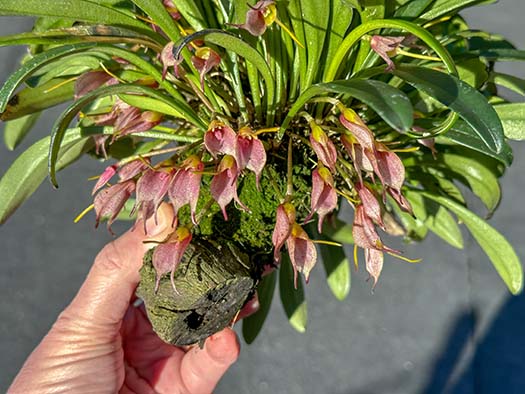 |
Masdevallia floribundaI Find this to be the easiest Masdevallia to grow outdoors—it seems to tolerate the summer hot/dry spells better than others, even though it is mounted and not given any special care. Appropriately named for abundant blooms. |
Maxillaria elatiorTall, climbing and odd Maxillaria species with roots and 1” flowers nestled in the leaf nodes. |
|
Bulbophyllum rothschildianum 'A-doribil' FCC/AOSThis one is a bit of a shy bloomer for me—some years I get a large flush bloom, some years nothing, and this year a single spike. Interesting flowers and while I’m a species fan, I prefer the cross of this with B. longissimum to get B. Elizabeth Ann 'Buckleberry., which reliably puts on a great show every year (below) |
|
Bulbophyllum Elizabeth Ann 'Buckleberry'(Bulb. longissimum x Bulb. rothschildianum) |
|
From Roberta Fox:
|
|
Outside in the Back Yard: |
|
 |
|
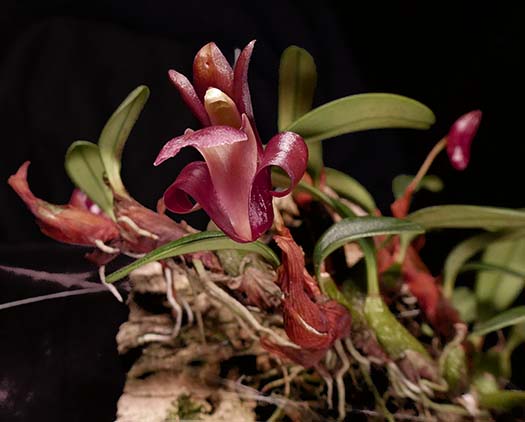 Epigeneium clemensiaeFrom Guishou, Hainan, and southeastern Yunnan provinces of China, also Laos and Vietnam, elevations 1000-1300 m. Epigeneium is now lumped with Dendrobium, but the species epithet was already taken, so it's officially Den. mariae. I'm not changing my tags. I have noted that Epigeneiums tend to grow off their mounts, producing the best growth when the plant and roots are hanging in the air.
|
 |
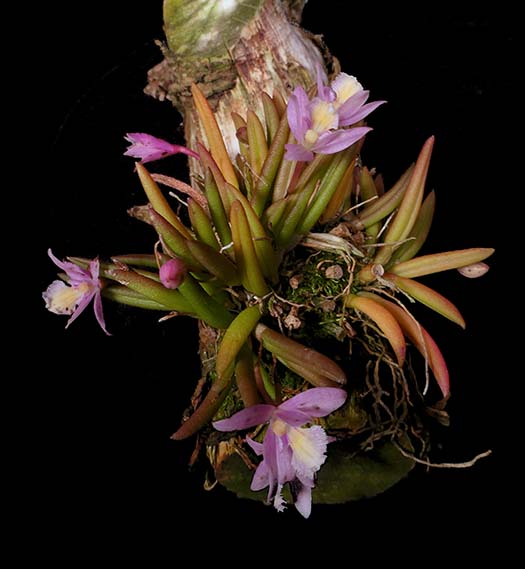 |
|
Leptotes harryphillipsiiWhere many Leptotes species bloom in April or May, this one brightens the winter. For several years it was considered to be synonomous with Lpt. pauoloensis, but the Kew Checklist now accepts it as a valid species. Native to southeastern Brazil. |
|
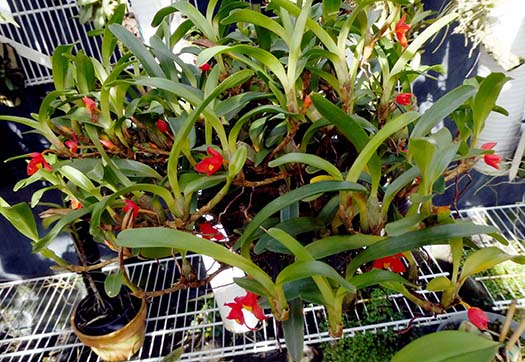
Maxillaria sophronitisWhat these flowers lack in size, they make up for in color saturation and in numbers. The plant produces a few flowers on and off much of the time, but produces a few flush blooms per year. The plant is extremely vigorous. It started out in a 4 inch basket, it is now in a 6 inch one but has extended far beyond its boundaries, and just keeps getting more floriferous. Native to Venezuela and into Colombia, elevations 760-1520 m.
|
|

Oncidium endocharisNative to Central America and southern Mexico, elevations 1300 - 2200 m. |
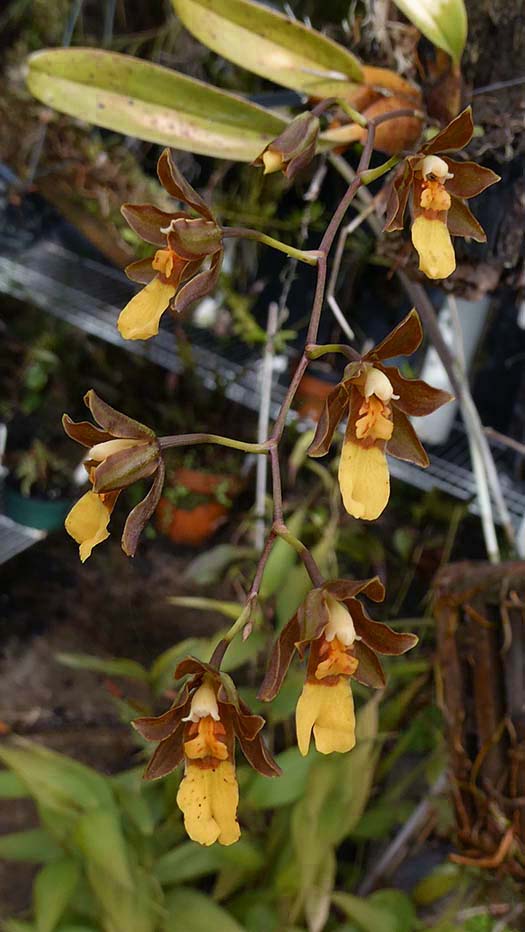 |
|
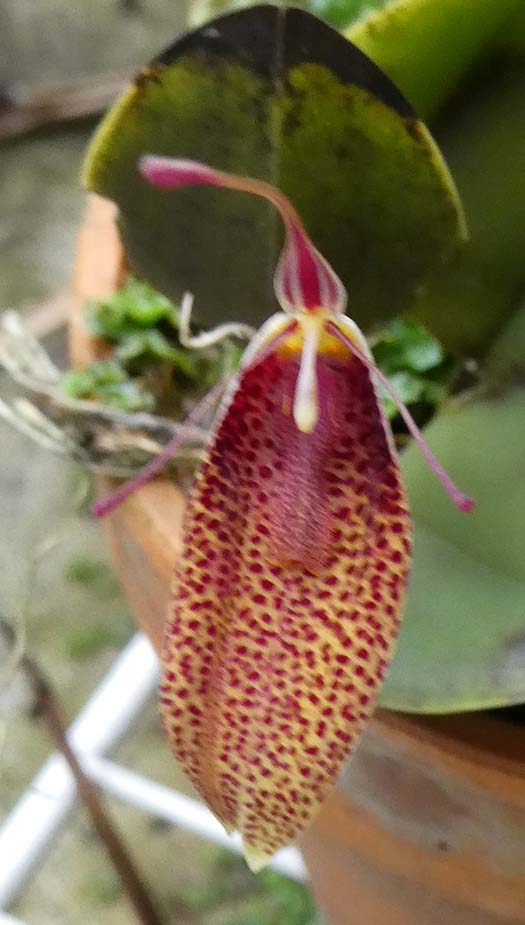 |
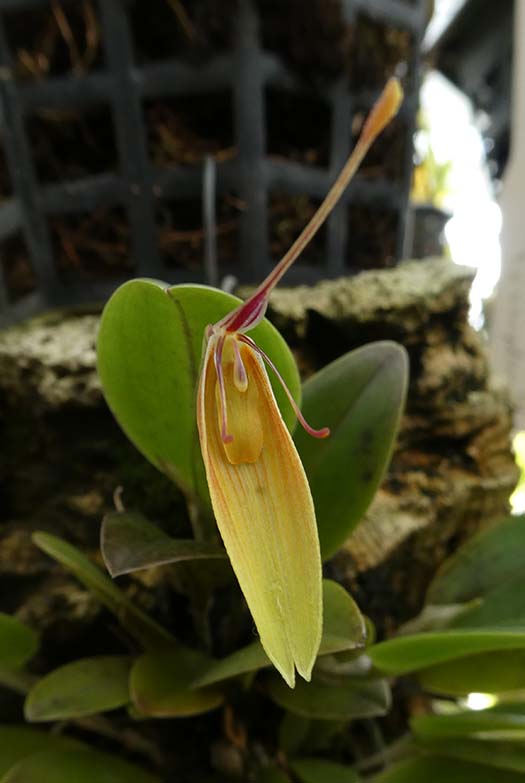
Restrepia jesupianaGolden glow with a brush of orange. Native to western Venezuela, 2300-2800 m. Flowers are fairly large for the genus. |
|
|
|
Rodriguezia decoraThe plant tends to ramble, producing many keikis. Southern Brazil into Argentina and Paraguay, elevation around 1000 m. It tolerates both heat and cold. |
|
Cattleya percivaliana 'Orchid Ranch'This one always blooms later than my other C. percivalianas. It's my best one, I think. It is a bit larger (about 7 inches/18 cm natural spread) with deeper color, than "Summit" and nice form. With this one, I end up with 3 months of C. percivaliana. Yes! |
|
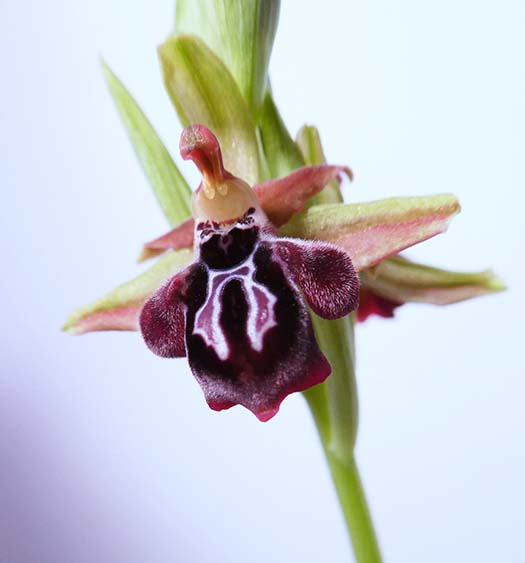
Ophrys ariadneWinter will soon be behind us, and this is my first Mediterranean terrestrial to bloom. A harbinger of what we can look forward to ove the next 2 months or so. |
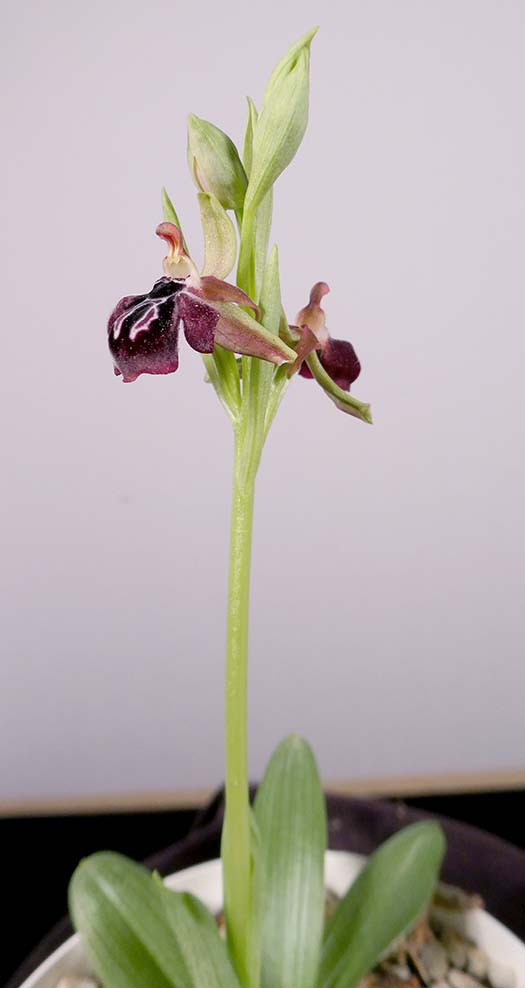 |
In the greenhouse... |
|
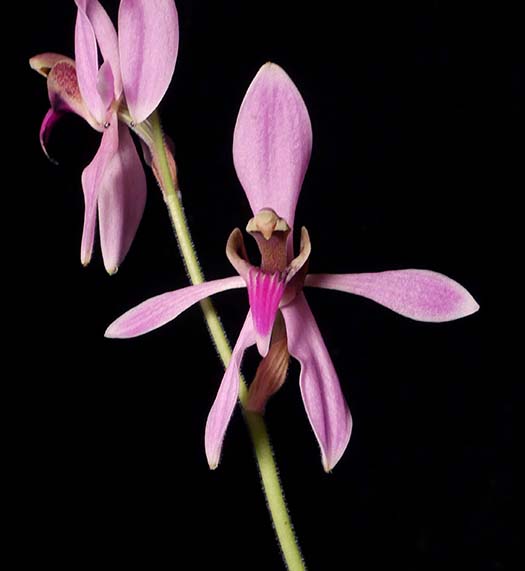
Ancistrochilus rothschilidianusNative to a wide range of tropical west Africa. It tends to lose leaves about the time that it blooms (or shortly thereafter). Pseudobulbs are shaped somewhat like Hershey's Kisses candies. |
|

Vanda (Ascocentrum) garayiNative to a wide area of southeast Asia, elevations up to 1000 m but mostly lower. It probably could grow outside, but it's doing so well in the greenhouse, I'm not moving it. |
|
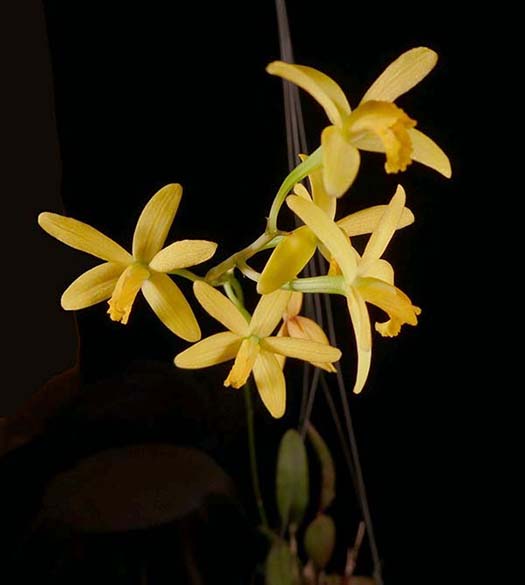
Cattleya crispata (Laelia flava)A rupiculous Laelia from Brazil. It is native to a range of elevations. I had it outside for several years and it wasn't doing well so I moved it into the greenhouse and it has been thriving. So this particular plant may have come from a lower elevation. |
|

Dendrobium nemoraleNative to the Philippines on the island of Luzon, at relatively low elevations. I love the "alligator" pattern on the segments. |
|

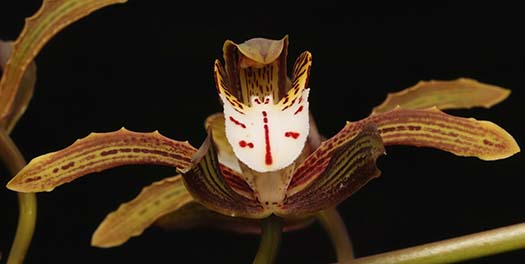
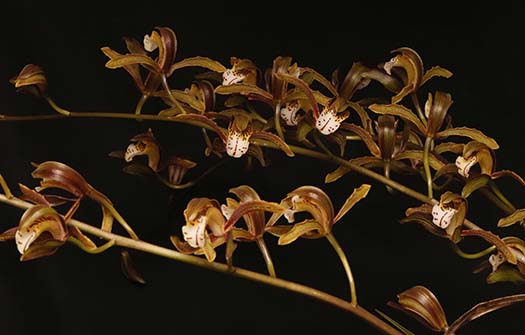
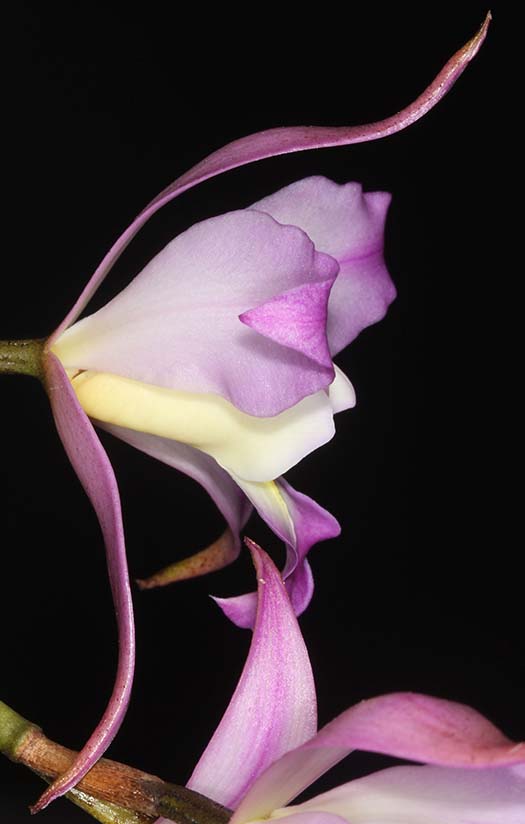
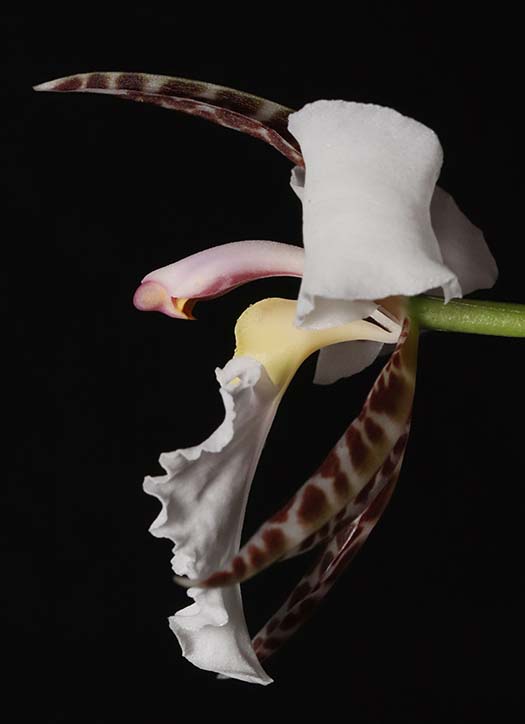
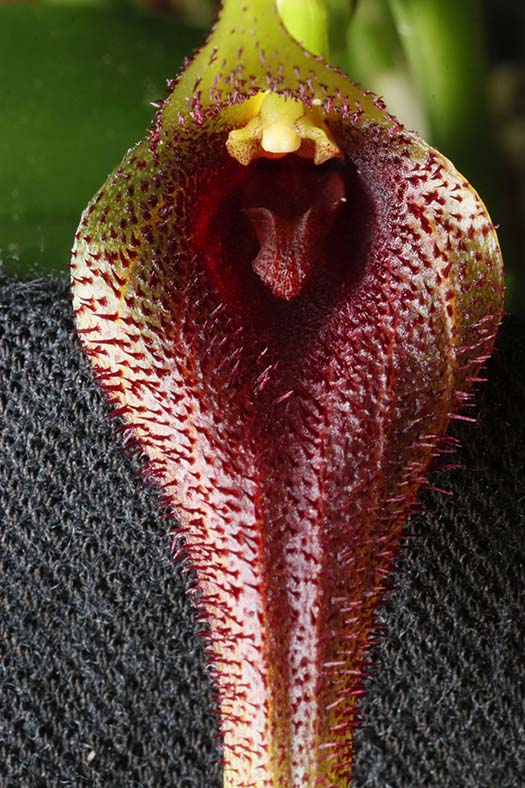
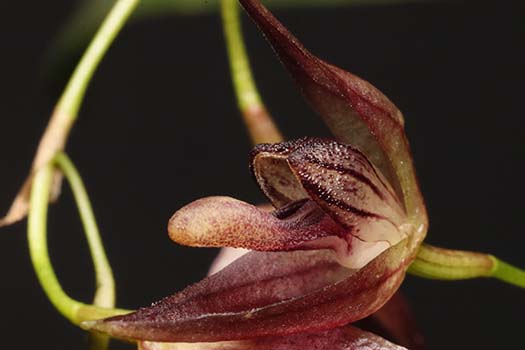
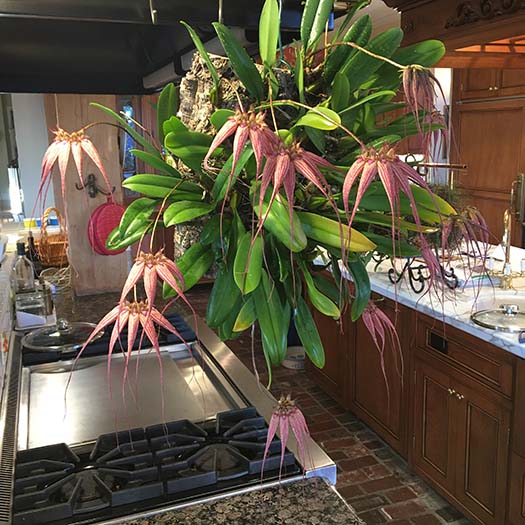
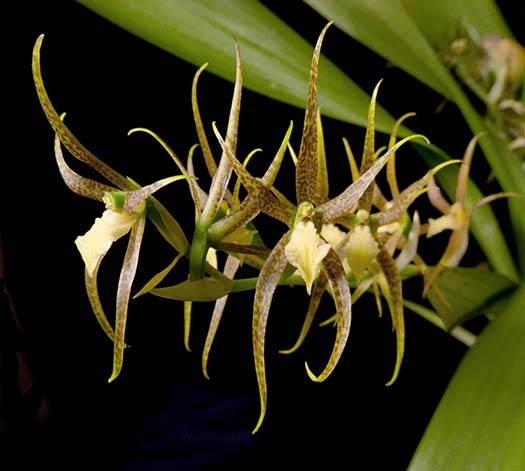

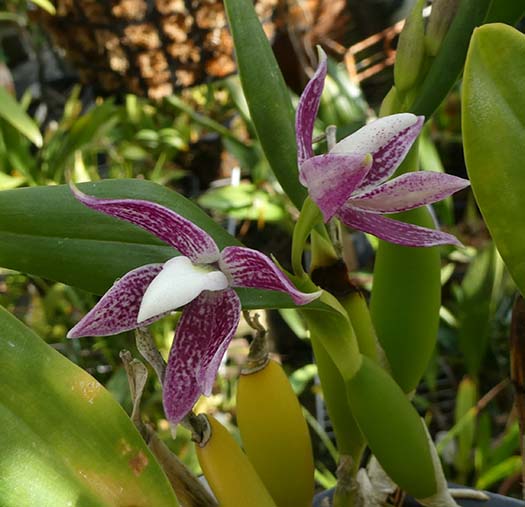
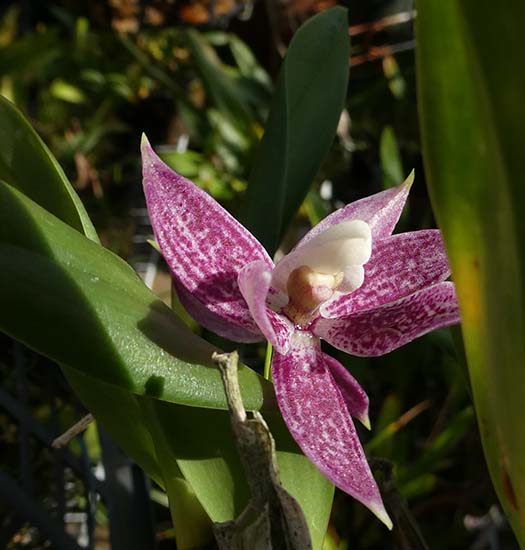
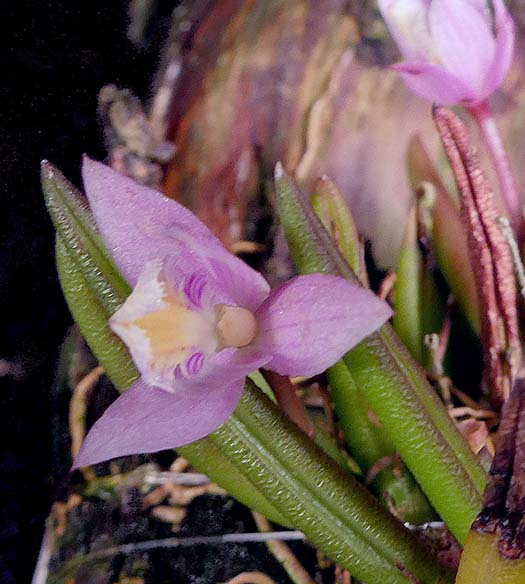
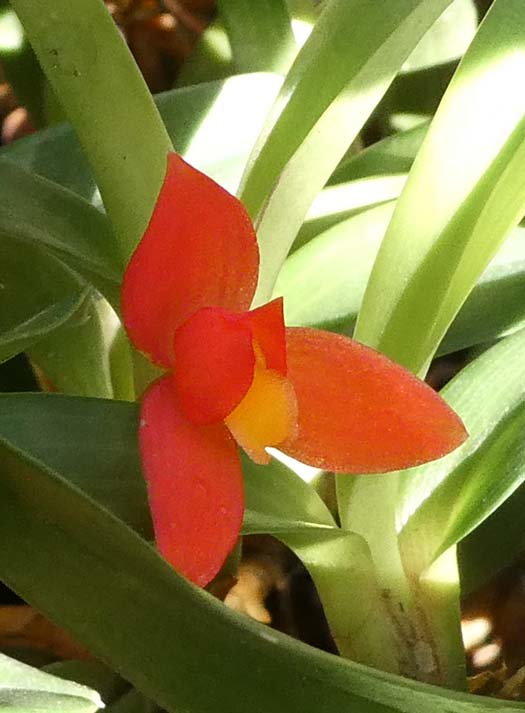
 Restrepia elegans
Restrepia elegans
